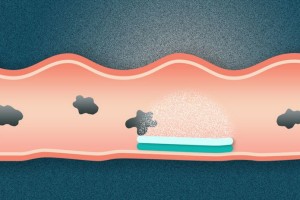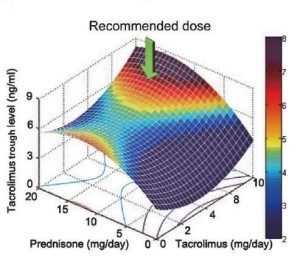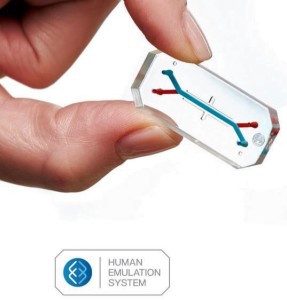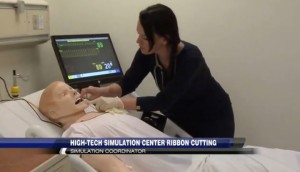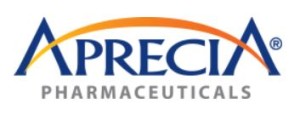- Engineers develop a pill for long-term drug release (news.mit.edu)
Researchers from MIT and Brigham and Women’s Hospital have designed a new type of pill that, once swallowed, can attach to the lining of the gastrointestinal tract and slowly release its contents. The tablet is engineered so that one side adheres to tissue, while the other repels food and liquids that would otherwise pull it away from the attachment site...Such extended-release pills could be used to reduce the dosage frequency of some drugs...The ability to precisely engineer the adhesiveness of a particle opens up possibilities of designing particles to selectively adhere to specific regions of the GI tract, which in turn can increase the local or systemic concentrations of a particular drug...In addition to delivering antibiotics, the two-sided material may help to simplify drug regimens for malaria or tuberculosis, among other diseases...The researchers may also further pursue the development of tablets with omniphobic coatings on both sides, which they believe could help patients who have trouble swallowing pills...Texturing the surfaces really opens up a new way of thinking about controlling and tuning how these drug formulations travel...
- Drug dosing goes digital with software to personalize medication (statnews.com)Individualizing liver transplant immunosuppression using a phenotypic personalized medicine platform (stm.sciencemag.org)
A new algorithm may take the guesswork out of medicating patients with cancer, bacterial infections, organ transplants, and other conditions that require very precise drug dosing...Individual differences can alter patient response to medications...Metabolism, body type, ethnicity, other illnesses, and genetics can play a role in how patients respond to drug treatment...The researchers call their method parabolic personalized dosing, or PPD. They gave patients medication and then observed the dosages which brought positive responses...the dosage could be reduced or increased based on how much medication was in the patient’s blood, with the successful doses added to the parabola. The researchers called the parabola "a robust map that identifies drug doses (inputs) that ensure that a patient will stay in a target range."...Establishing a patient’s parabola still requires administering drugs and then observing the response, something doctors already do. "This allows us to make a better guess,"...In the age of big data, algorithms could play a helpful role in integrating a lot of patient information to make dosing decisions.
- Organ-on-a-chip startup Emulate raises $28.75M Series B (medcitynews.com)
Cambridge organ-on-a-chip startup Emulate has raised $28.75 million in a Series B round, with aims to commercialize its "Human Emulation System" on the R&D circuit. The idea, as with most lab-on-a-chip technologies, is to enhance in vitro research so as to make animal and in-human studies more efficient – using algorithms and microfluidics to accurately predict human response to medicines, chemicals and diseases...The financing will help expand Emulate’s organ-on-a-chip portfolio. Currently, it’s got organ emulations of the lung, liver, intestine and skin – but it plans to branch into organs like the kidney, heart and brain. Beyond that, however, is the concept of developing specific labs-on-chips to address important disease states, such as cancers, disorders of the intestine and microbiome, and infectious disease...Emulate wants its technology to operate as a plug-and-play system in the hands of product development teams at pharmaceutical, chemical, food and consumer products companies...
- Plant-based vaccines poised to challenge $4bn seasonal flu shot market (in-pharmatechnologist.com)
An influenza vaccine produced in tobacco plants could make a big impact in the market if it reaches the market in the US in time for the 2018-19 flu season, says a market analyst...The vaccine - currently being tested in phase III trials by Mitsubishi Tanabe - has clear advantages over not only vaccines produced via the traditional route in eggs but also newer vaccines produced in cell culture...Mitsubishi Tanabe's candidate is one of a number of flu vaccines in development based on the expression of virus-like particles - self-assembled units that are closer in structure to the wild-type virus than subunit-based vaccines made in eggs. Clinical trials suggest they may be able to provide greater and longer-lasting protective immunity...By incorporating influenza genetic material into tobacco leaves new vaccines can be made in as little as four weeks - six times faster than egg-based methods - which means producers can match circulating flu strains more closely. They can also react quickly if a new strain of the virus starts to emerge...plant-based manufacturing offers reduced infrastructure costs and can slash production times in half...If the company's product, or one like it, is approved, GlobalData expects a novel vaccine that boasts a rapid, plant-based manufacturing process to have a significant impact on the seasonal influenza vaccine landscape...
- High-tech patient simulators unveiled at Renown (kolotv.com)
Manikins that breathe, sweat, cry and give birth are the newest high-tech teaching tools at Renown Regional Medical Center. They simulate normal healthy human functions. They can also imitate the symptoms of a medical conditions, giving health care professionals training opportunities...Sensors can tell the coordinators if the right medications and dosage were used. If not, the patient simulator may begin to display symptoms of a reaction. Organizers hope the program gives new and experienced nurses broader knowledge. Doctors and nurses will begin training with the manikins in early May...
- How Technology Is Changing the Inhaler Industry (pharmacytimes.com)
Michael Cawley, BS, PharmD, RRT, CPFT, FCCM, professor of clinical pharmacy at the University of the Sciences, discusses how new technology is changing the inhaler manufacturing industry.
- iMedicare launches RefillReport.com (drugstorenews.com)
iMedicare, a company that provides Medicare Part D plan comparison software to pharmacies, announced recently that it had launched RefillReport.com, a platform that aims to help patients connect with local pharmacies to save money on their Medicare plan...The site is looking to help patients compare plans at different community pharmacies and potentially save money on a Medicare plan. It also features information about how Medicare Part D works, answers frequently asked questions and keeps information updated about different challenges that could affect patients throughout the year...
- JAMA Forum: We Can’t All Have It All: The Economic Limits of Pharmaceutical Innovation (newsatjama.jama.com)
Even though US consumers spend 3 times more for hospital care than for medication, they are much angrier with pharmaceutical companies than hospitals for driving up the cost of health care. Drug companies raise this apparent inconsistency in an effort to defend their pricing practices. In so doing, however, they fail to appreciate why they’ve been targeted for so much opprobrium. Ironically, the industry’s biggest public relations problems may arise from its most effective and widely applicable innovations...Taking medications is the most common way US consumers use health care...patients are 8 times more likely take a prescription drug than to use hospital inpatient services...US patients are relatively underinsured for prescription drug expenses, further contributing to high out-of-pocket costs...The upward trajectory of cost sharing amplifies the effect of price increases on patients. As coverage erodes, the veil separating patients from drug prices lifts; fewer get such a clear view of hospital prices...The rate of increase in drug prices has outpaced that of overall medical care every year since 2008...Higher prices may help fuel drug innovation. Yet, at the current price trajectory, the rate of innovation will eventually exceed our ability to pay for it. Fostering valuable innovation with financial reward is the engine of much of American commerce, including in health care. It’s a fantastic model, responsible for tremendous gains in longevity, well-being, and satisfaction. We should keep that engine turning, but only as rapidly as we can afford.
- Jean Coutu launches Rx image transmission service (chaindrugreview.com)
Jean Coutu Group has introduced an image transmission service for new prescriptions that’s designed to make it easier for patients to fill medications...The Canadian drug chain said...that the new service is accessed via the Jean Coutu mobile application. To use the service, patients open their Health Record in the app and then take a photo of their prescription. The image is then sent directly to their Jean Coutu pharmacy. When the medication is ready for pickup, the pharmacy sends a text message to the patient...the image transmission service is a time-saver for both patients and their pharmacists. Prescriptions can be sent to the pharmacy as soon as patients get them from their doctors, and pharmacists can prepare the medications in advance...Besides the new prescription image transmission service, the Health Record also enables users to complete a simultaneous request for prescription renewals for one or more family members; receive an "it’s ready" notification via email or text when prescriptions are available for pickup...and scan a prescription label to request a refill.
- Aprecia announces availability of 3D-printed drug Spritam (drugstorenews.com)
Aprecia Pharmaceuticals announced the U.S. availability of its Spritam (levetiracetam) tablets...The epilepsy medication is the first tablet made using the company’s ZipDose 3D printing technology to be approved by the Food and Drug Administration. It is designed to dissolve with a sip of liquid, easing the process of taking medication for patients with difficulty swallowing...

